Manhole Covers of Port Hueneme, California
Created 18 July 2006
This page was last updated on 25 November 2008
All photos copyrighted by David L. Magney 2006
This is a study of manhole covers of Port Hueneme, Ventura County, California.

Counter Stats

foreign exchange Counter
Manhole Covers of Port Hueneme, Ventura County, California
Port Hueneme is a small city on the Oxnard Plain portion of Ventura County. Transportation, via the sea, is the main industry of Port Hueneme, with its deep sea port. Port Hueneme has the only deep sea port between Los Angeles and San Francisco, as distance of about 400 miles. Port Hueneme is bounded on the south and west by the Pacific Ocean and Oxnard on the north and east. Not one highway passes through Port Hueneme; however, State Route 1, the Pacific Coast Highway (PCH) passes by just a few miles east of the city.
Port Hueneme is a small seaport city at an average elevation of around 13 feet above sea level, meaning that the entire city will be under the ocean by 2050 if global warming is not checked and sea level rises 20 feet. Port Hueneme was a beach town, named after an important Chumash Indian word for "halfway point" or "resting place", being halfway between Point Mugu and the mouth of the Santa Clara River. This place was the site of a Chumash village. It is also the closest point on the mainland to the Channel Islands, specifically Anacapa Islands. Port Hueneme was founded in 1870, and incorporated in 1948. The "port" was first conceaved of my Thomas Bard in 1867 (I went to elementary school with his great grandson, Thomas Bard, who then lived at Hollywood Beach), recognizing the underwater Hueneme Canyon, building a 1,500-foot-long wharf in 1872 next to the trough just offshore. With the formation of the Oxnard Harbor District on 29 April 1939, spearheaded by Richard Bard (Thomas' son), the foundation was set for the dredging of the deepwater harbor in the location of the natural Hueneme Canyon. The harbor was completed by 4 July 1940.
Port Hueneme currently has a population of about 21,845 people (2000). Port Hueneme citizens are composed of 57.3% Caucasians, 41% Hispanics, 6.3% Asians, 6.1% African-Americans, and 1.7% Native American. The median household income for Port Hueneme residents is $42,246 and the per capita income is $17,311. About 12.7% of the residents of Port Huemene older than 25 years hold a bachelor's or higher degree. The national average of adults holding a bachelor's or higher degree is 22.3%. The average commute time for working Port Hueneme residents is 21 minutes, indicating that a large percentage works out of town. Oil production (support), national defense (Navy), manufacturing, agriculture, and tourism are the primary factors driving the economy of Port Hueneme. About 3,500 jobs are tied directly to the Port of Hueneme.
Port Hueneme is now known most famously for its deep water port, which was built as an extention of a natural undersea canyon, likely once the prehistoric mouth of the Santa Clara River (in Pleistocene times). It is also home to the U.S. Navy's Construction Batalion (Seabees), which is now part of the Naval Base Ventura County (a combination of Pt. Mugu Naval Air Station and the Seabee base for political reasons in an attempt to prevent base closures in Ventura County). Bubbling Springs Creek is the only natural stream that passes through town, originating from an artesian spring, now in Bubbling Springs Park. The City of Oxnard has hemmed Port Hueneme in, preventing it from expanding laterally. Sea level rise as the result of global warming will put much of Port Hueneme under water by the year 2050 unless drastic changes are made by humans to reduce carbon dioxide releases into the atmosphere. Additional information about Port Hueneme can be found at Port Hueneme Info and at the Official Port Hueneme site, and the history of the port is at Port Hueneme History .
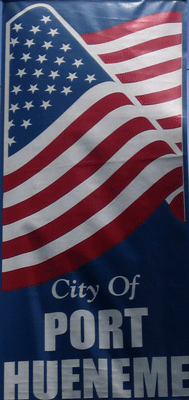
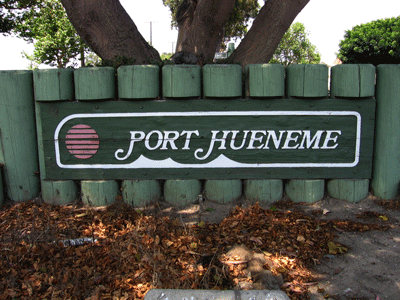
It just so happened that I had photographed this banana boat from Ecuador the day that eight Ecuadorian stowaways were found onboard trying to enter the United States illegally. They were on the Malaga Carrier, a cargo ship docked at the Port of Hueneme.
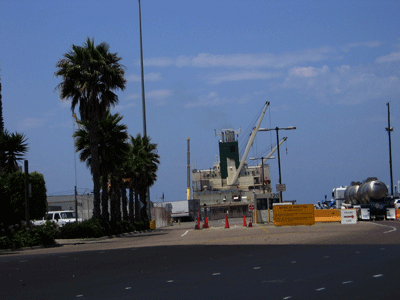
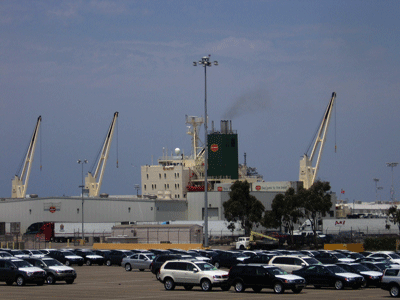
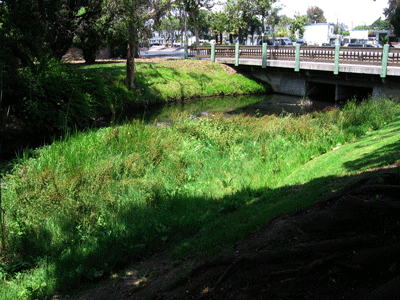

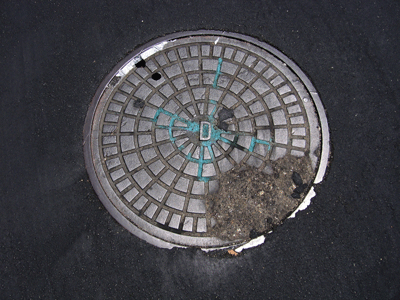
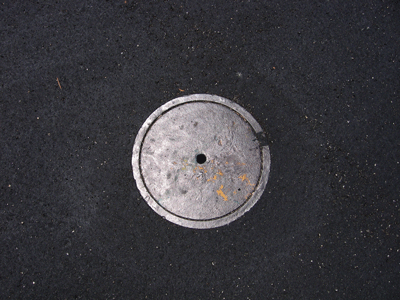
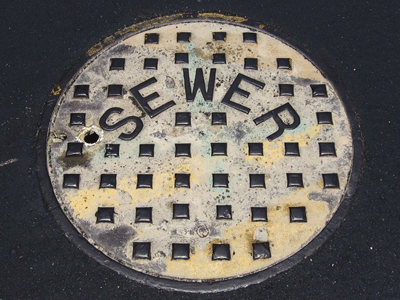
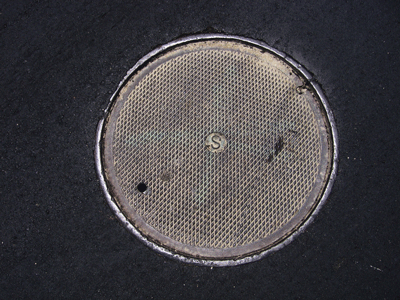

Previous Page |
Next Page
Magney's Manhole Covers Home Page
Magney's Biogeography/Photography Home Page
David Magney Environmental Consulting Home












